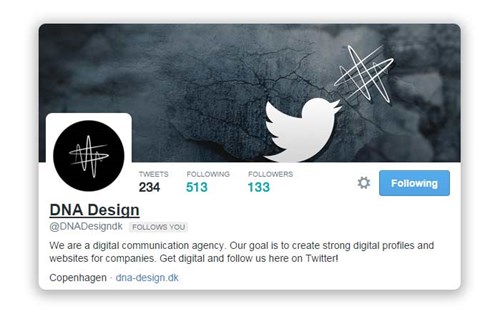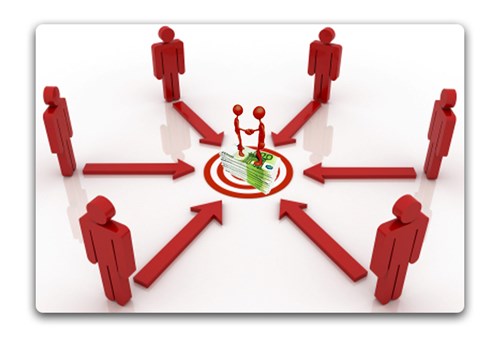Let’s start with numbers and statistics of your organisation. How many people visit your website and out of that many people, how many of them contact you? What do they ask when they call you? Do they call to buy your product or to get more information? Do they access your website using a smartphone, a tablet or a computer?

Fig: Comparison between Quarter-2 and Quarter-3 for device specific websites visit worldwide [Source]
Statistics overwhelmingly show that your website is very likely your customers’ first impression of your brand or store. That being said, keeping your site up-to-date and relevant is definitely in your best interest. An upgrade may mean a new site, but in some cases, may be just mean fixing up what you already have. Here are 10 signs that it might be ‘time to make some changes to your website’:
1. Website’s Content
The reason for people to visit your website is the content and so is the reason why they choose to come back again or why they may lose interest. If your website’s content is out-dated or irrelevant, it will affect the SEO decreasing the ability for search engines to find you. According to BIA/Kelsey and ConStat, nearly all consumers (97%) now use online media to shop locally [Source].
Updating current content or adding new ones are important. In fact, it is very easy to manage content by using some content management systems like WordPress or Umbraco. If you are not keeping your website’s content up-to-date, you could be missing out on search engine’s traffic.
2. Your Website and Social Media Networking
Social media is more than just amassing likes. Companies are using advanced social techniques to rehabilitate corporate reputations, uncover ideas for breakthrough products, and figure out what competitors are up to [Source]. When you see a product which interests you, the first thing come into your mind is to research more about it. The research study by Google, “Zero moment of Truth” would surprise you to know that a full 70% of population now say they look at product reviews before making a purchase, or that 79% of consumers now say they use a smart-phone to help with shopping [Source].
Social media marketing strategies to drive traffic to a small business’ website range from the basic things everyone should be doing to sophisticated methods that take a little more time and effort. Building website traffic for social media can be performed by following few basic steps as under.
• Your website’s existence on all social network
Create your website’s page and include its URL Twitter, Facebook, LinkedIn, and Google+

• Engage and Monitor Your Website’s Social Media
Once your social network profiles takes step two, start monitoring and engaging by showing your existence about product and quality. This will drive the customers to your website. Don’t hesitate to share relevant content that you have on your website to prospects. That may also include listening to recommendation requests and share a relevant link to your website that answers viewer’s inquiry.
• A company blog page
Share your company’s ideas and strength with the viewers worldwide in your own words. Using social media effectively to drive traffic to your website to a lack of new content is one of the biggest barriers. Staying active on your blog is the easiest way to maintain a dynamic website and make sure you’ve always got something to say on social media. When you point your social messages to great new content on your site, your followers are more likely to click through and become customers.
• Advertising through social media
Social network ads are proved traffic increasing packs. Using Twitter promotion or Facebook ads can create a good conversion if you link back a dedicated landing page. You can also create ads on LinkedIn that links to a lead generation form on your site.
3. Converting visitors to prospects
Now this is the moment when a user visits your website, give him/her a tour of your brand. Show what products and services you have. If your website doesn’t invite them to look around or give them opportunities to interact, you may be missing opportunities to filter users into your sales funnel. Look at your homepage, are there opportunities for one to contact you?
Is the call to action clear? 
4. Responsive Website
The statistics mentioned above says that tablet and mobile users are increasing enormously to browse internet. It is widely experienced that if your website is not responsive, you are already losing about 45% visitors (15% tablet and 30% mobile browsers). That means about half of your website visitors closed the browser or chose to visit your competitor’s (responsive) website the moment when they saw your website is non-responsive.

In my previous post about Think Responsive Web Design – Think Business, I’ve mentioned the prospects and opportunity on how important it is to have a multi-device friendly website.
5. User friendly website
Another important point to engage visitors is keeping a user friendly interface to your website. Personally, I’d not like to visit or return to any website where I’m not sure how to navigate through or use it.
6. Your website speed
Evidence suggests that every millisecond (one-tenth of a second) consumers wait for your website to load generates a 1% loss of sales. Multiplied over the course of an hour, potential lost sales, revenues and profits – the benefits of conversion – can be enormous. Equally as important is the possibly permanent loss of consumer interest [Source].
7. Compete with your competitors
Keeping your website content, products updated is the key to attract those who use the internet to shop and learn about the products and services. Chances are, if they found your website, they have looked at your competitors sites as well. If their site is more user friendly, device friendly, fast and attractive, you might be losing more money in missed prospects than it would cost to upgrade your website.
8. Website older than 3 years
As of today, the world of web development is ever-changing. In the past three years, there has been drastic change in options to have your customers to listen to you. There are plenty of new opportunities in terms of technology (examples: apps, widgets, frameworks, integration, etc.) that makes your website more user-friendly and appealing to your audience more than ever before. Sometimes, this means an upgrade to what you already have and sometime this can mean a complete new website.
9. Your website is your online brochure
Viewers don’t only want to see informative text and offerings when they visit your website, they wish to take more advantage of getting to know you. A website will be of no benefit to you or them if it doesn’t encourage and facilitate interaction.
10. Match your website with your strategy
When you started your website, you had a set of goals to achieve and your website was developed in order to target those goals. Those goals may have changed in the course of time. With a new marketing strategy you will have to match your website with your new plans. There is a possibility that you might need a complete new website with new navigations, options and contents.



